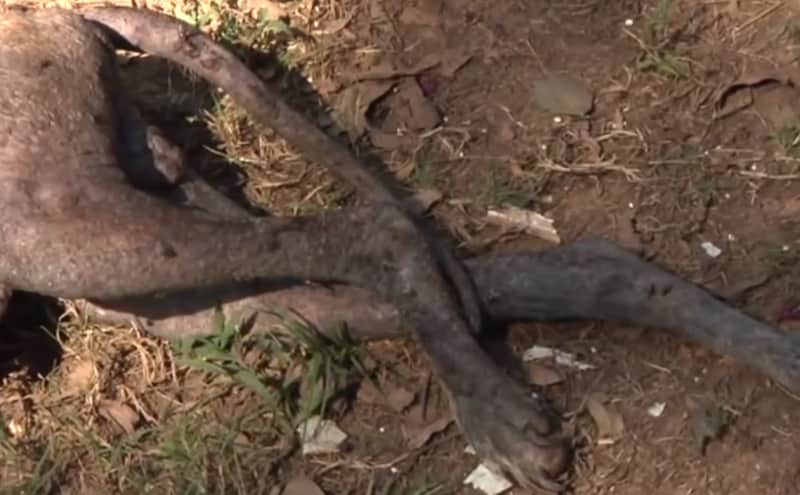Mississippi Hunter Claims He Shot Chupacabra
OutdoorHub Reporters 09.15.13

Matt Hewharrell of Lena, Mississippi was hunting for raccoons when he spotted a pair of glowing eyes in the dark. He would later tell WJTV that he initially thought it was a coyote. Unlike a coyote, however, the creature was nearly completely hairless and had a strange blue-tinted color. It was following Hewharrell between bales of hay in a neighbor’s barn when Hewharrell said it started behaving aggressively.
“When I was standing right yonder, he hid right here. And I was seeing the teeth and red eyes. It looked like he was going to jump down there and I didn’t give him the chance,” said Hewharrell.
The hunter fired once with his .22 and made sure another round was in the chamber before going to inspect the strange animal. When Hewharrell showed the carcass to the owner of the property, Wayne Thompson, both men had no explanation for what the creature could be. Thompson later discovered from his neighbors that the dog-like animal had been seen before in the neighborhood, usually near chicken coops. Based on photos of the creature and reports of its activities, officials from the Mississippi Department of Wildlife and Fisheries are pretty sure that the animal is in fact, a very ill coyote. One explanation of the animal’s appearance is the possibility of mange, but the residents of Lena believe there is more to the story.
“They said it was one of them chupacabras. […] That’s what I’d call it because it looks just like it,” Hewharrell said.
Hewharrel is not the first hunter to claim that he may have killed a legendary chupacabra, a mythical creature that feeds on the blood of goats and other domesticated creatures. Unlike other legendary animals such as the Loch Ness Monster or Bigfoot, sightings of chupacabras have only been frequent in the last decade or so. Many scientists consider the creature a cryptid, or an animal that only exists in folk tales.
The residents of Lena are not so sure.
“My dog, even when it’s dead, my dog’s been scared of it,” Hewharrell said.
Hewharrell’s catch is not the first case of hairless “coyote” in recent years. Discovery News reports that a group of scientists such as biologist Barry O’Connor believe that the “chupacabra syndrome” is actually caused by Sarcoptes scabiei, a skin-burrowing mite. The mite digs into a coyote’s skin and in great numbers can cause hair loss or build a hard, leathery skin in the hapless canines. The loss of fur is a major disability in coyotes and may cause the animals to behave desperately, explaining their aggressive nature towards humans and livestock.
“Because these animals are greatly weakened, they’re going to have a hard time hunting,” O’Connor said. “So they may be forced into attacking livestock because it’s easier than running down a rabbit or a deer.”
An interview with Hewharrell can be seen below:
http://youtu.be/wyMggg2eaoY

